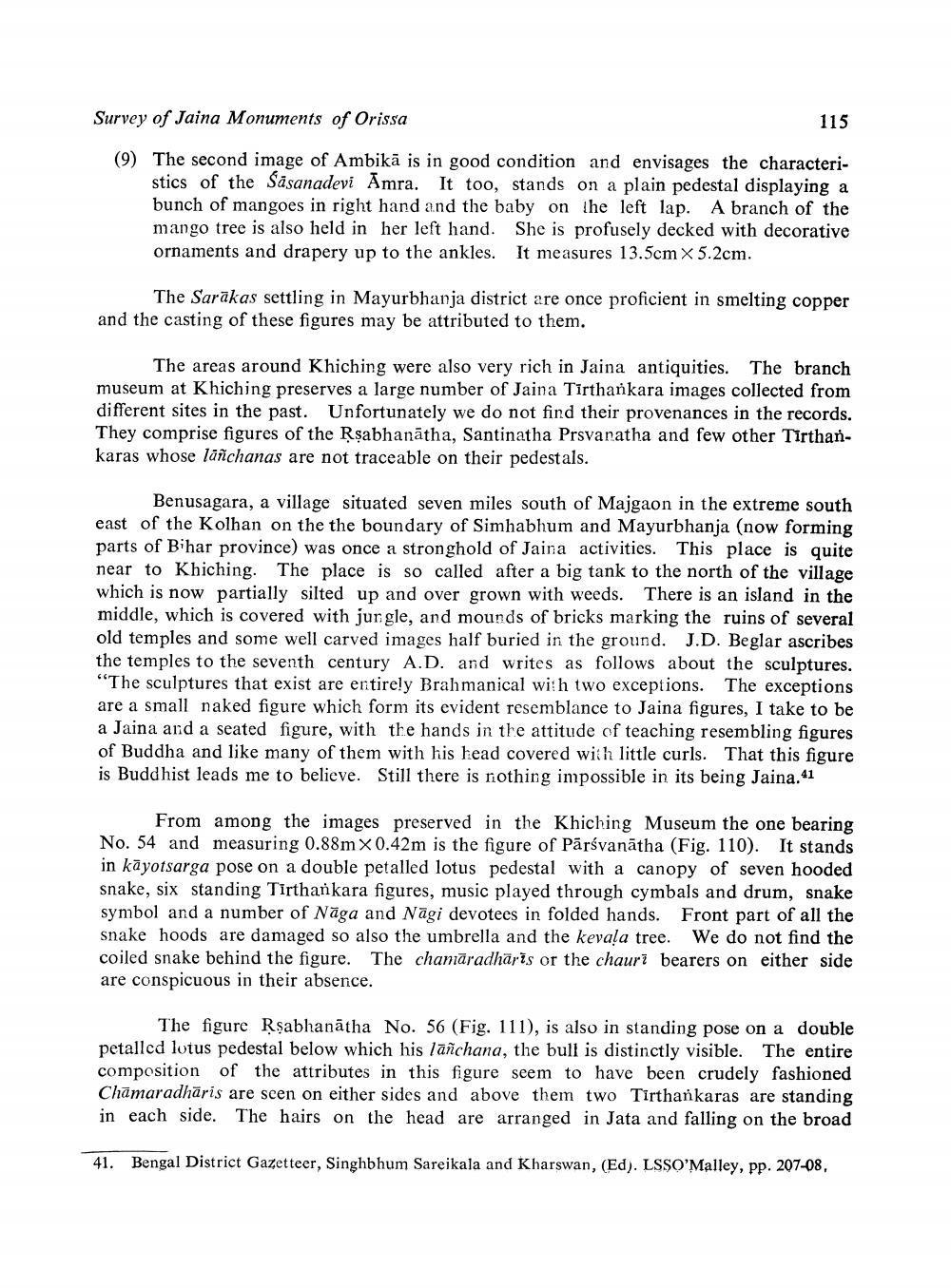________________
Survey of Jaina Monuments of Orissa
(9) The second image of Ambika is in good condition and envisages the characteristics of the Sasanadevi Amra. It too, stands on a plain pedestal displaying a bunch of mangoes in right hand and the baby on the left lap. A branch of the mango tree is also held in her left hand. She is profusely decked with decorative ornaments and drapery up to the ankles. It measures 13.5cm x 5.2cm.
115
The Sarākas settling in Mayurbhanja district are once proficient in smelting copper and the casting of these figures may be attributed to them.
The areas around Khiching were also very rich in Jaina antiquities. The branch museum at Khiching preserves a large number of Jaina Tirthankara images collected from different sites in the past. Unfortunately we do not find their provenances in the records. They comprise figures of the Rṣabhanatha, Santinatha Prsvanatha and few other Tirthankaras whose lanchanas are not traceable on their pedestals.
Benusagara, a village situated seven miles south of Majgaon in the extreme south east of the Kolhan on the the boundary of Simhabhum and Mayurbhanja (now forming parts of Bihar province) was once a stronghold of Jaina activities. This place is quite near to Khiching. The place is so called after a big tank to the north of the village which is now partially silted up and over grown with weeds. There is an island in the middle, which is covered with jungle, and mounds of bricks marking the ruins of several old temples and some well carved images half buried in the ground. J.D. Beglar ascribes the temples to the seventh century A.D. and writes as follows about the sculptures. "The sculptures that exist are entirely Brahmanical with two exceptions. The exceptions are a small naked figure which form its evident resemblance to Jaina figures, I take to be a Jaina and a seated figure, with the hands in the attitude of teaching resembling figures of Buddha and like many of them with his head covered with little curls. That this figure is Buddhist leads me to believe. Still there is nothing impossible in its being Jaina."1
From among the images preserved in the Khiching Museum the one bearing No. 54 and measuring 0.88mx 0.42m is the figure of Pärsvanatha (Fig. 110). It stands in kayotsarga pose on a double petalled lotus pedestal with a canopy of seven hooded snake, six standing Tirthankara figures, music played through cymbals and drum, snake symbol and a number of Naga and Nagi devotees in folded hands. Front part of all the snake hoods are damaged so also the umbrella and the kevala tree. We do not find the coiled snake behind the figure. The chamaradharts or the chauri bearers on either side are conspicuous in their absence.
The figure Rṣabhanatha No. 56 (Fig. 111), is also in standing pose on a double petalled lotus pedestal below which his lañchana, the bull is distinctly visible. The entire composition of the attributes in this figure seem to have been crudely fashioned Chamaradharis are seen on either sides and above them two Tirthankaras are standing in each side. The hairs on the head are arranged in Jata and falling on the broad
41. Bengal District Gazetteer, Singhbhum Sareikala and Kharswan, (Ed). LSSO'Malley, pp. 207-08,




